Welcome to Saturday Sparks! This week, we’re exploring the fascinating and strategic world of curling, a winter sport that blends mindfulness, teamwork, and a touch of friendly competition. With its unique mix of precision, focus, and camaraderie, curling offers a refreshing way to stay active and connected during the colder months.
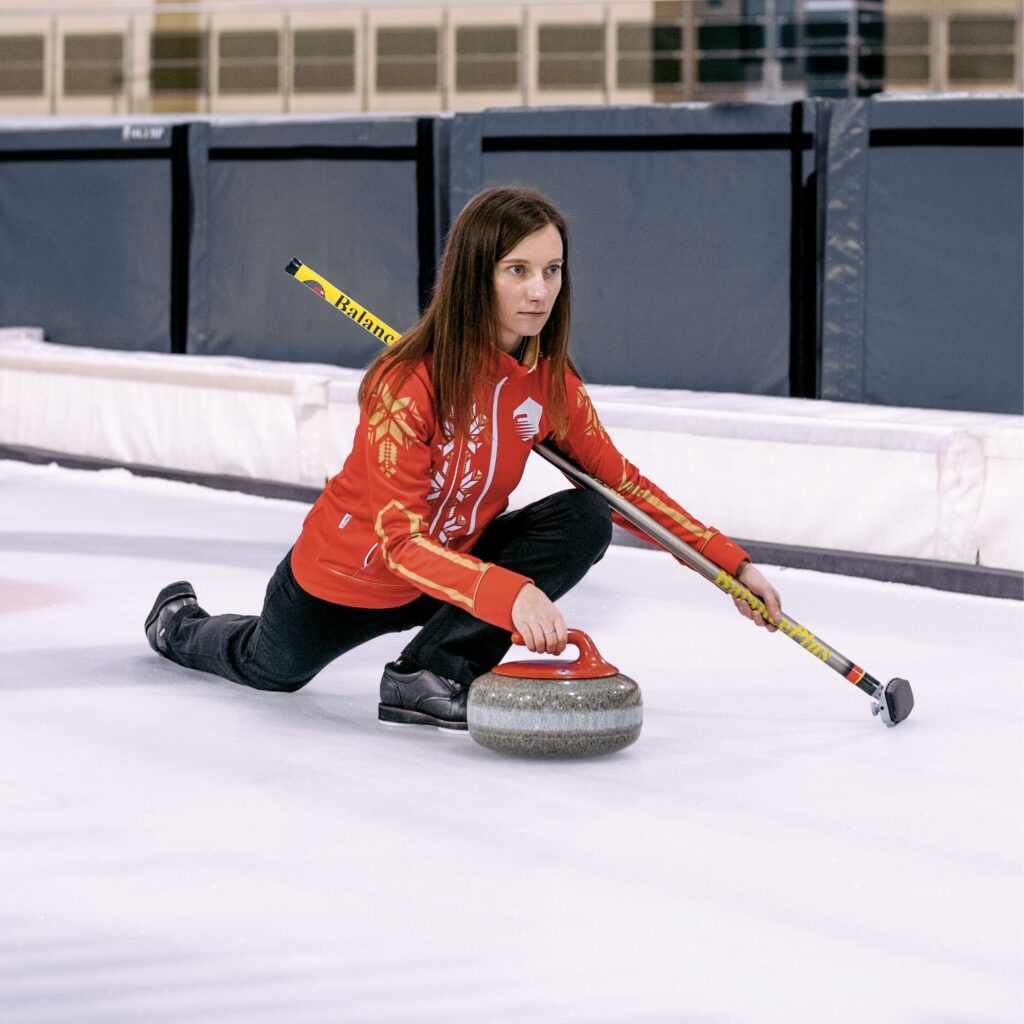


At its heart, curling is about intention. Every slide, sweep, and stone placement calls for calm focus and communication. Often compared to chess for its tactical depth, curling is as much about planning as execution. Each move builds on the last, demanding both skill and intuition. It’s a sport that invites patience, rewarding strategy over speed and presence over power, a perfect example of mindfulness in motion.
DESCRIPTION
Curling is played on a carefully prepared sheet of ice, typically 146 to 150 feet long and about 14.5 feet wide. The surface is pebbled, sprayed with tiny droplets of water that freeze into a textured layer. This pebbling is what allows the granite stones to glide smoothly and “curl” or curve as they travel.

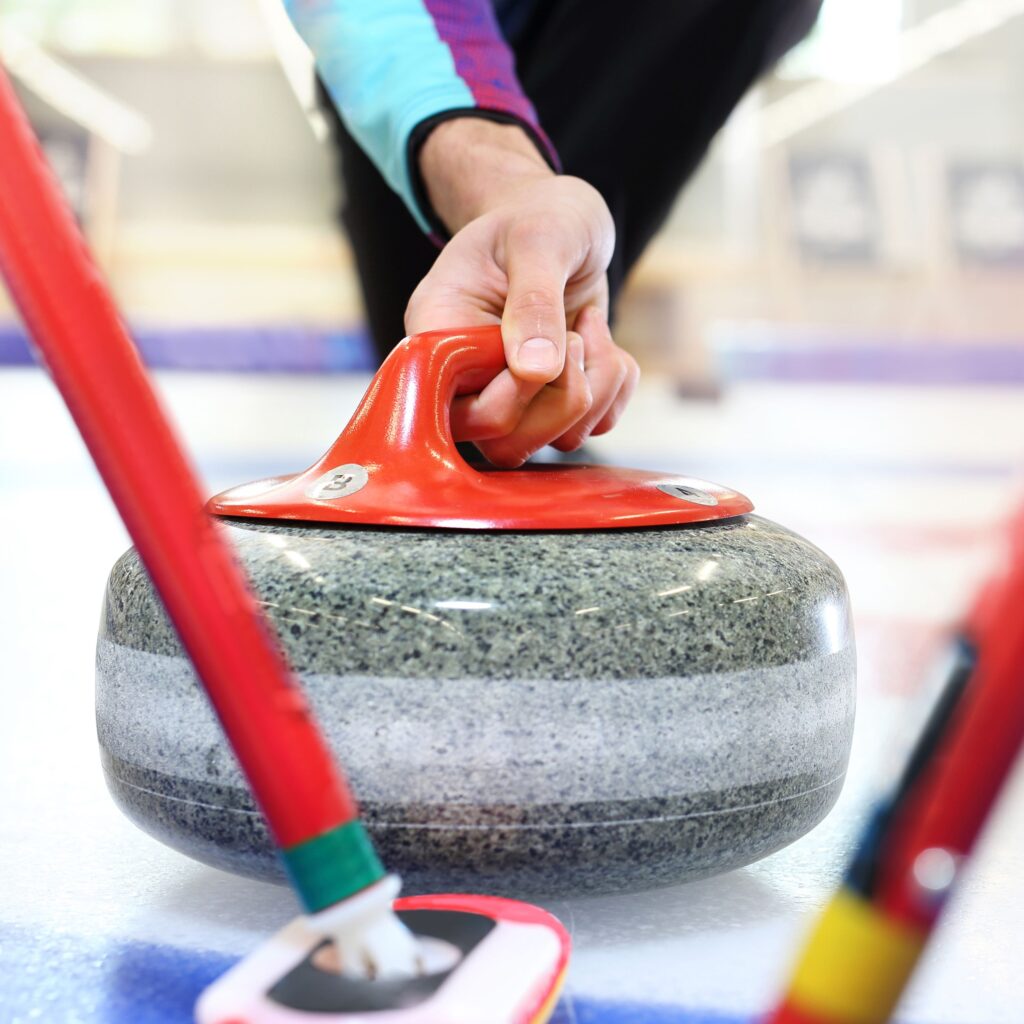
Each curling stone weighs about 40 pounds and is made from dense granite, traditionally quarried in Scotland.
The stone’s handle allows players to impart a gentle rotation as they release it, the source of the sport’s name, since that spin makes the stone curve slightly in its path.
Players compete in teams of four. Each team member delivers two stones per “end,” similar to an inning in baseball.
The goal is to position your team’s stones closer to the center of the circular target, or house, than your opponent’s.

Only one team can score in an end, earning a point for each stone closer to the center than the opponent’s nearest stone. Games typically last eight to ten ends.

Two teammates use brooms to sweep the ice in front of the moving stone, reducing friction and influencing both distance and direction.
Sweeping warms the ice slightly, allowing the stone to travel farther and straighter.
The skip, who acts as the team’s strategist, directs each play from the opposite end of the sheet, calling out instructions on line and speed.
Curling requires precision, balance, and trust between teammates.
Every shot, whether a gentle draw to the button or a powerful takeout to remove an opponent’s stone, is a collaboration of skill, timing, and communication.
While the sport has a reputation for quiet concentration, games are lively with sweeping calls and strategy discussions. It’s a mix of science and artistry, one where success depends on both technical understanding and teamwork.
Benefits of Curling
Curling promotes mindfulness and focus. The deliberate pace and precise movements invite players to slow down and become fully absorbed in each moment; from setting the stone to the rhythm of sweeping. That calm focus quiets distractions and strengthens concentration, turning every game into a moving meditation that nurtures mental clarity and presence.

It builds balance, strength, and coordination. Curling may look effortless, but maintaining control on ice requires stability and awareness.
The sliding delivery strengthens legs, hips, and core, while sweeping activates the shoulders, arms, and upper back. It’s a low-impact workout that enhances coordination, flexibility, and endurance, making it suitable for nearly all fitness levels.
It encourages strategic thinking and creativity. Curling isn’t just physical, it’s deeply tactical. Players learn to anticipate outcomes, plan several moves ahead, and adapt to changing ice conditions.
Each decision combines geometry, touch, and imagination, engaging the mind as much as the body.
It’s known for being inclusive and accessible. One of curling’s greatest strengths is its adaptability. Players of all ages and abilities can participate, and many clubs offer programs for youth, seniors, and individuals with mobility challenges. Adaptive equipment, such as delivery sticks or stabilizers, ensures that everyone can enjoy the game safely and confidently.

Curling fosters teamwork and communication. Every shot depends on collaboration. Teammates must coordinate their timing, read the ice together, and trust one another’s instincts. That shared focus creates strong bonds and a genuine sense of camaraderie, both during competition and in the social gatherings that often follow.

And perhaps most of all, it’s fun. Curling’s combination of teamwork, laughter, and gentle competition makes it a uniquely joyful experience. Few things compare to the shared satisfaction of watching a perfectly placed stone glide into the house, or the friendly banter that follows a close game.
Getting Started
The easiest way to begin is by signing up for a “Learn to Curl” class at a local rink or curling club. These beginner sessions are designed to teach you the fundamentals in a fun, low-pressure setting. Most clubs provide brooms, sliders, and stones, so all you need is warm, layered clothing and clean, rubber-soled shoes for traction on the ice.
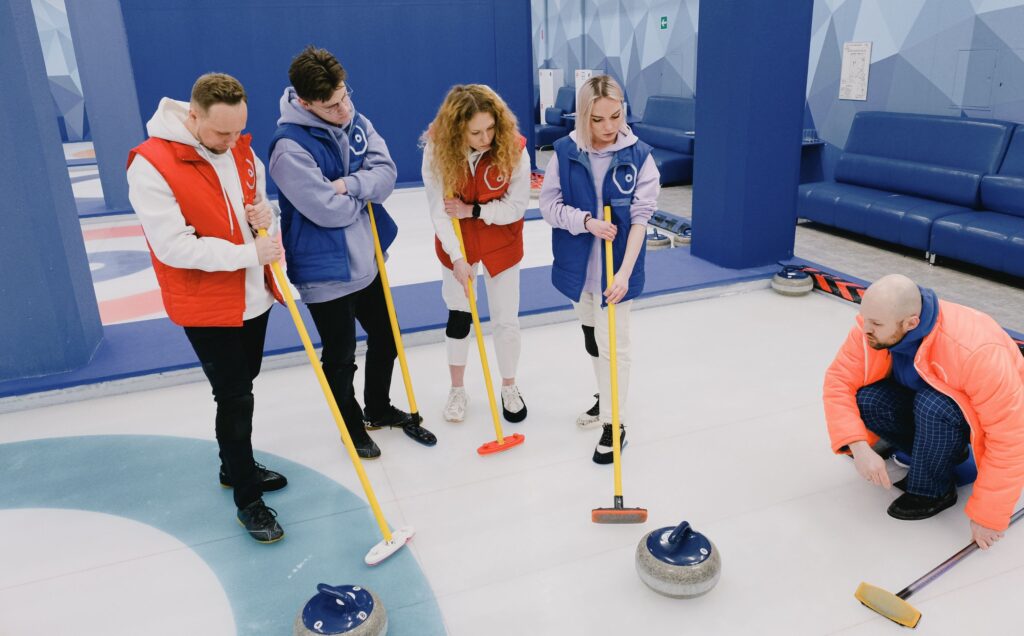
Start by learning the basic delivery technique, sweeping form, and scoring system. Instructors will help you understand how to slide safely, release the stone with control, and communicate effectively with your teammates.
If you don’t have a curling facility nearby, you can still get a feel for the sport at home. Try following along with video tutorials on delivery form and sweeping drills.
Practicing balance exercises, like gentle lunges or sliding footwork on a smooth surface, helps build stability and muscle memory before you ever step on the ice.
Some regions also offer pop-up or traveling curling events on portable rinks, so check your community listings during the winter season.
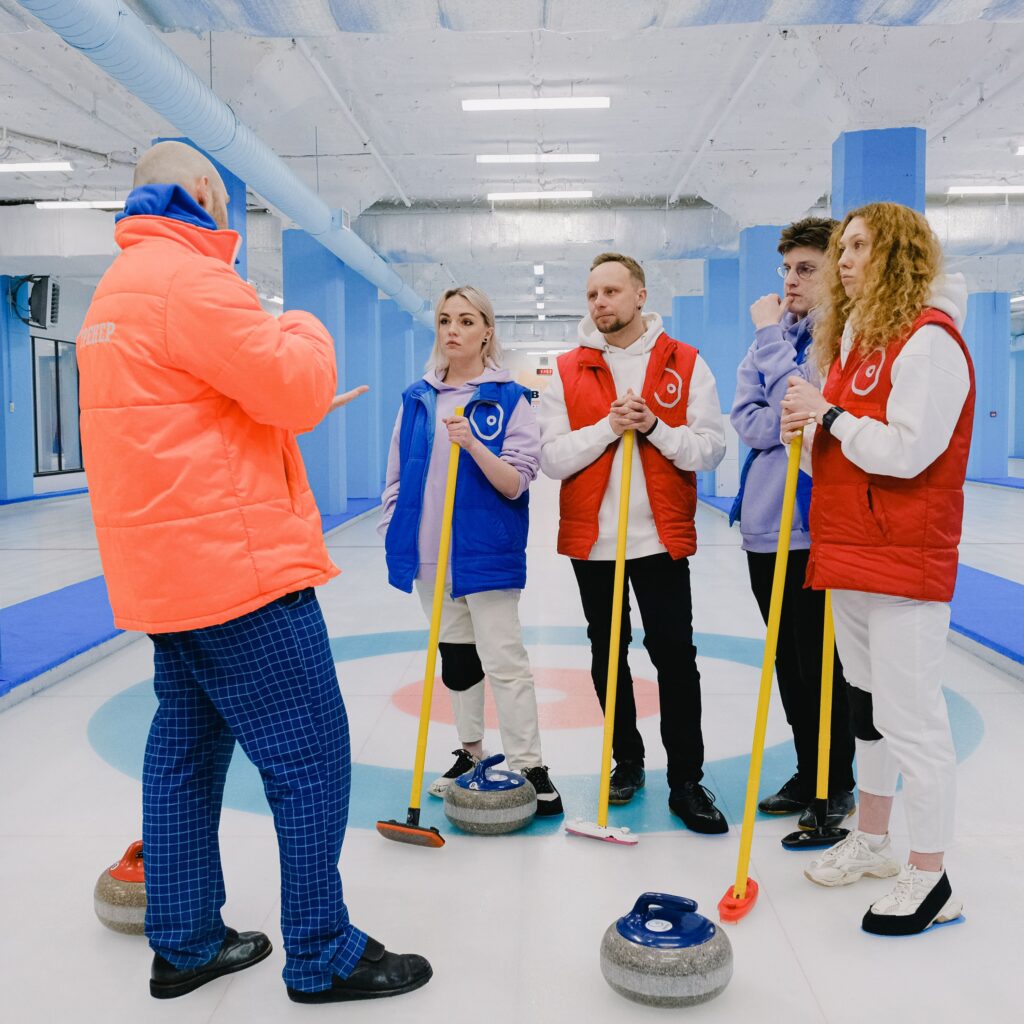
Once you’ve mastered the basics, join a community league or open-ice night to keep practicing. These sessions offer a relaxed environment where beginners and experienced players often share the same sheet, it’s a great way to learn through observation and friendly conversation.
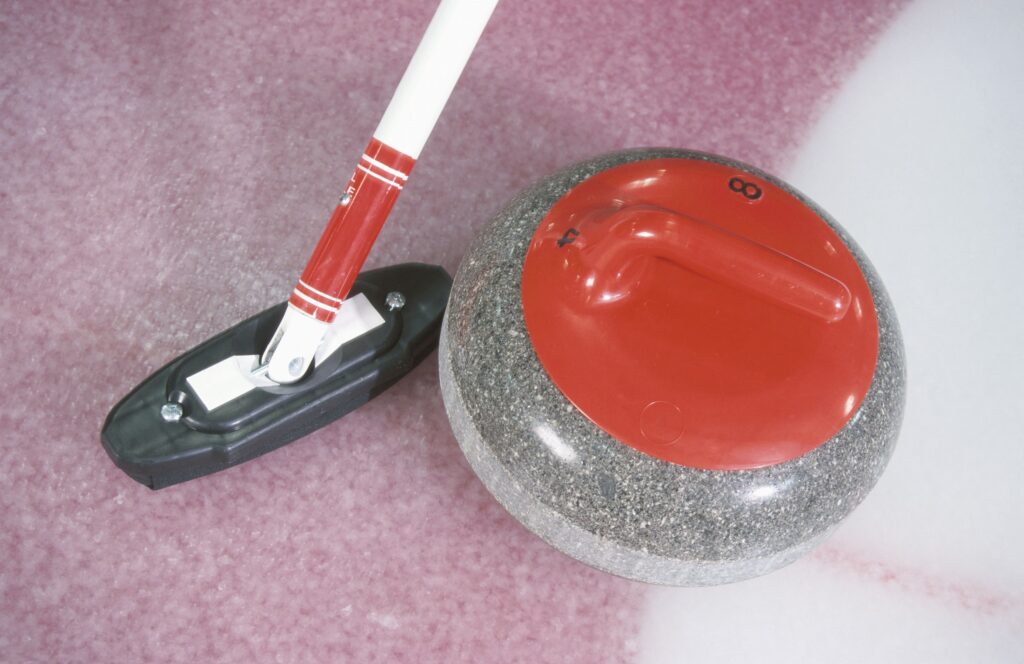
As you gain confidence, you can experiment with your own gear, such as a personal broom, gripper, or slider shoe for better stability and comfort. Some players even add a stabilizer or delivery stick for balance and precision.
Above all, remember that curling is a sport that rewards patience and consistency.
Take your time, focus on technique, and enjoy the process. With every stone you throw, you’ll feel your balance, control, and confidence grow, one smooth glide at a time.
Curling Resources
One of the best parts of curling is how many ways there are to get involved, even if you don’t have a dedicated rink nearby. Whether you want to learn the techniques, join a team, or invest in your own gear, there are plenty of options to help you get started.
For official programs, the U.S. Curling Association maintains a nationwide club locator at curlingclubfinder.org, where you can find local curling clubs, leagues, and training centers.
Many of these clubs host “Learn to Curl” events, social leagues, and beginner-friendly open-ice nights throughout the season.
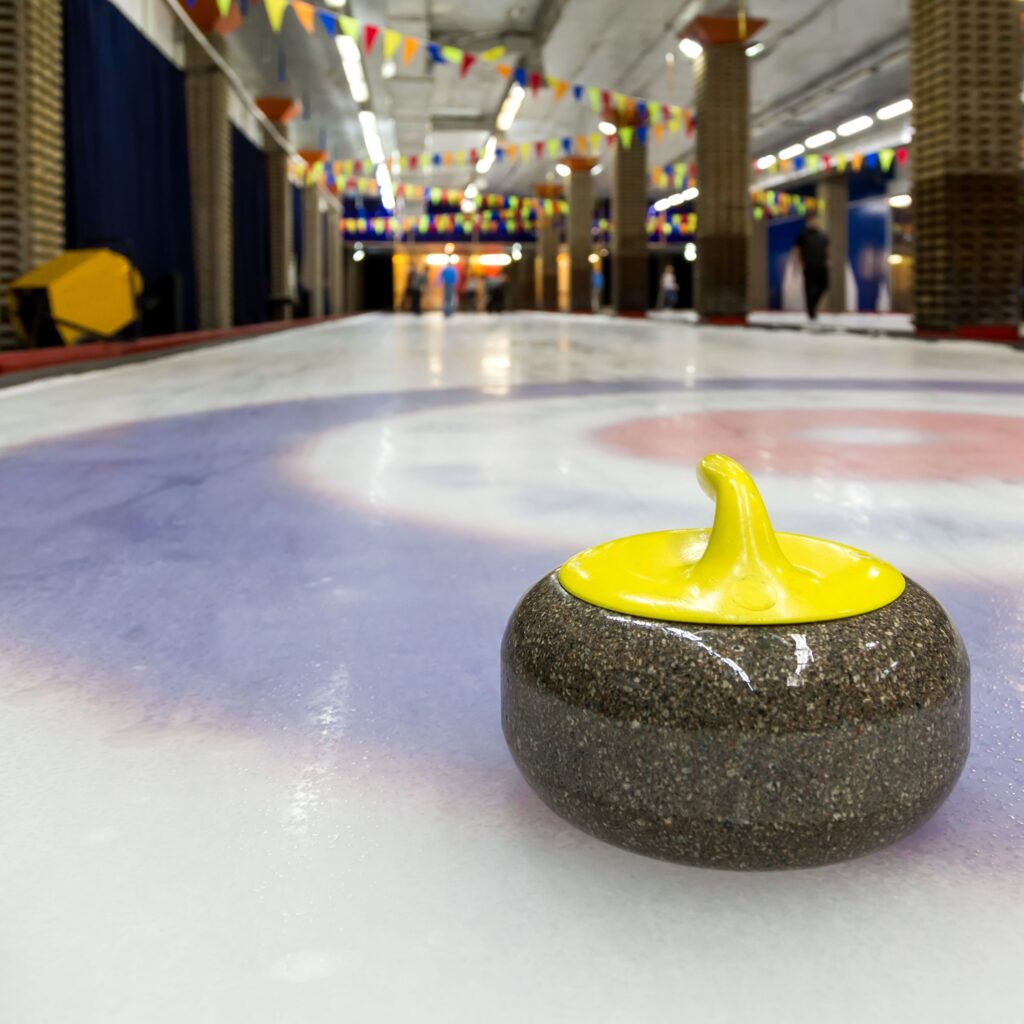
If you prefer to start on your own, online tutorials are an excellent way to learn the fundamentals. YouTube channels like World Curling TV, CurlingZone, and Curling Canada provide step-by-step guidance on delivery, sweeping form, and strategy. The World Curling Federation’s website also offers free resources, including downloadable rulebooks and beginner guides.

For those without nearby facilities, look for community recreation centers or seasonal pop-up rinks, some cities host traveling curling experiences or “street curling” setups on synthetic ice.
These provide a fun, hands-on introduction to the sport without needing specialized ice conditions.
Curling’s welcoming atmosphere means newcomers are often matched with experienced players happy to show them the ropes.
To meet other players, explore Meetup.com, Facebook Groups, or your local community recreation boards for teams and leagues seeking members.
And for staying connected, mobile apps like Curling.io and TeamSnap help track local events, schedules, and team communication, a convenient way to keep your new hobby organized as you grow.

If you’re ready to invest in your own gear, you can find curling brooms, sliders, grippers, and shoes through Goldline Curling, BalancePlus, and Canada Curling Stone Co. These retailers ship within the U.S. and often feature beginner bundles. Local clubs also frequently sell or rent used equipment, which can be a cost-effective way to start.
Safety and Tips
Safety in curling begins with mindfulness, both in your movements and in your awareness of the ice surface. While it’s considered a low-impact sport, ice can be slippery and unpredictable, so a few simple habits make all the difference.
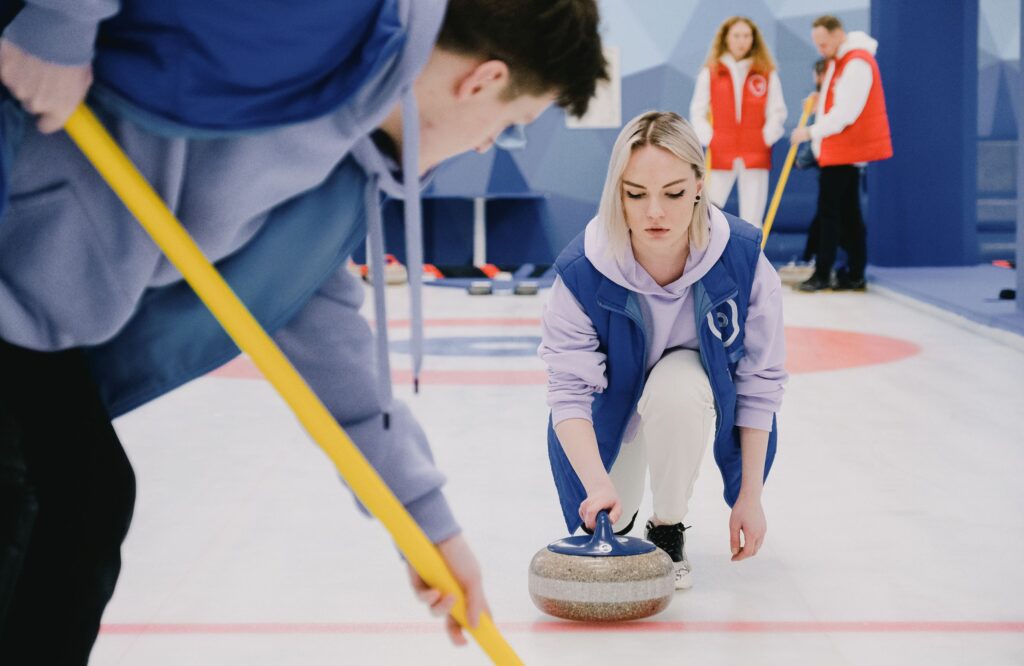
Always walk carefully on the ice, keeping your knees slightly bent and your weight centered. Short, shuffling steps help you maintain control and reduce the risk of slipping. Many beginners find it helpful to wear curling grippers over their shoes for better traction.

Before starting, take a few minutes to warm up your muscles, especially your legs, hips, and shoulders. Gentle stretches or light squats improve flexibility and stability. Curling involves controlled lunges and sweeping motion, so warming up helps prevent strain.
Dress in layered, flexible clothing that keeps you warm without restricting movement. The rink environment can be cold, but once you start sweeping, you’ll warm up quickly. Gloves are also helpful for grip and warmth, while hats or ear coverings protect against the chill.
Avoid loose clothing or long scarves, which can get caught in your broom or underfoot. Secure hair and remove any jewelry that might snag while sweeping or releasing the stone. Protective headgear is a smart choice for all players, not just beginners. Even experienced curlers can lose balance during delivery or sweeping, and a simple helmet or padded headband can help prevent head injuries. Helmets designed for skating or curling are lightweight and comfortable enough to wear throughout a match.
Keep your broom, slider, and gripper clean to ensure good traction and control.
Debris or melted ice on your equipment can affect your delivery and the stone’s path. After each session, wipe down your gear and let it dry before storing.
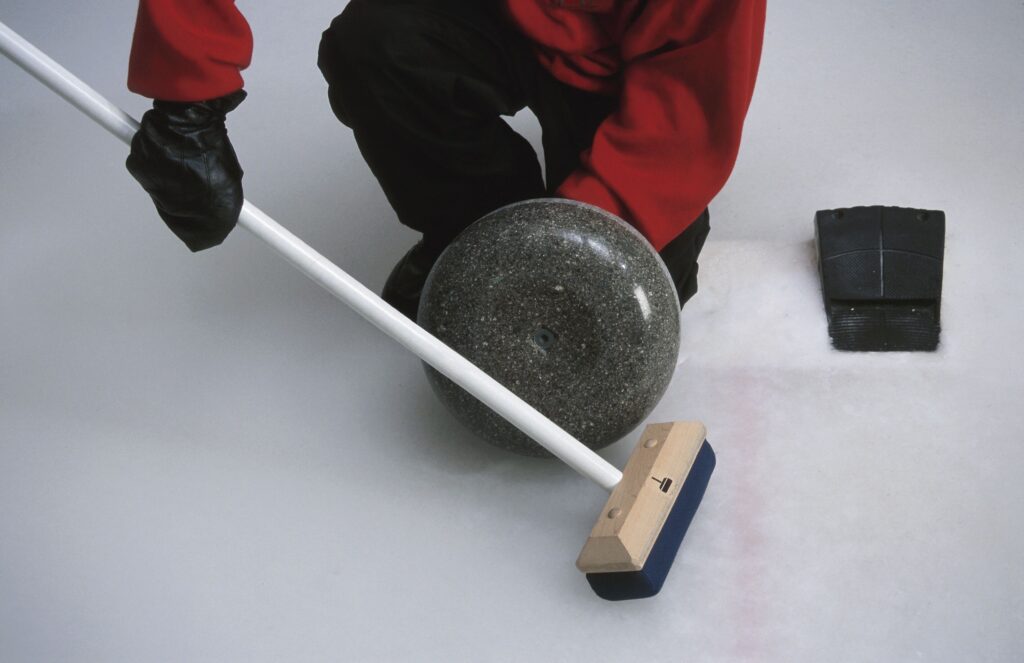
When you’re not delivering a stone, stay aware of where others are on the ice. Give players space during delivery, avoid standing directly behind someone sliding, and never step in front of a moving stone. Courtesy and awareness keep everyone safe and the game flowing smoothly.
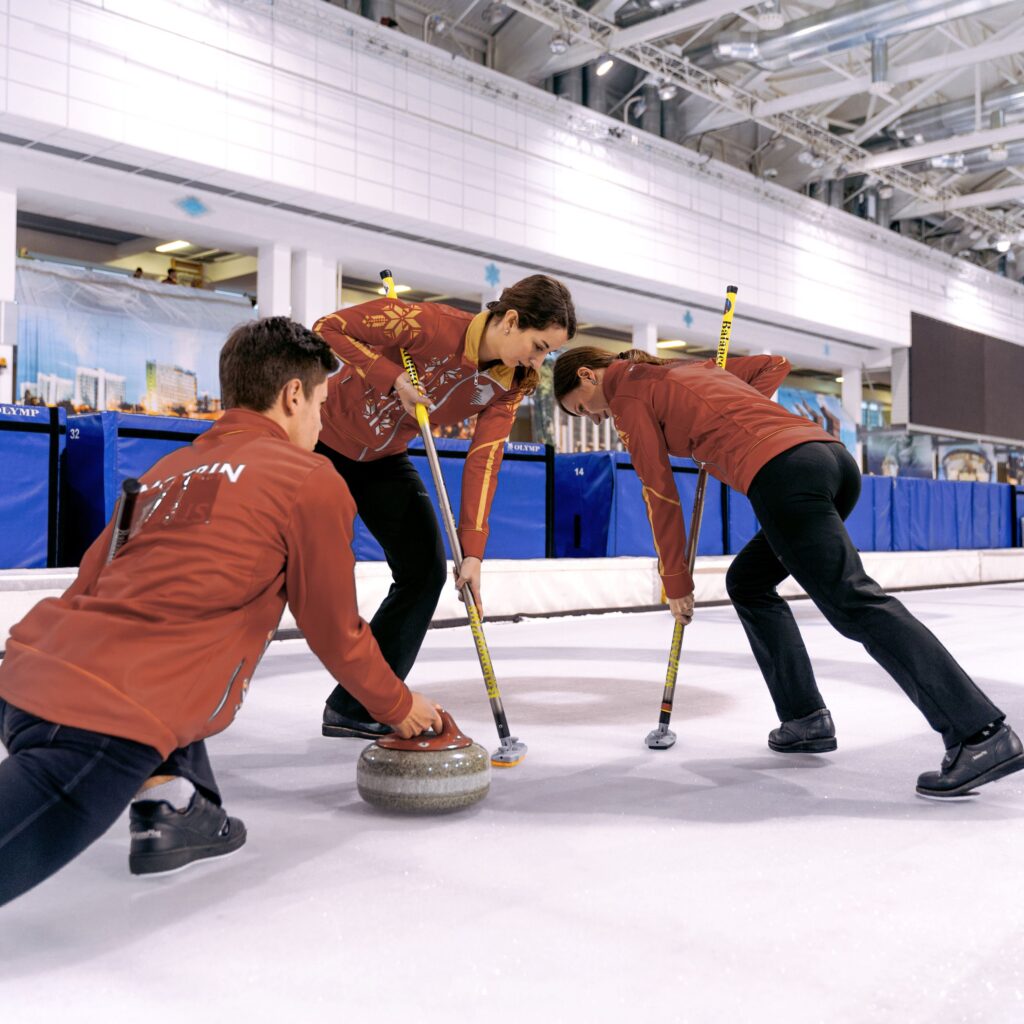
Curling is one of the safest ice sports when approached with care. With a little mindfulness and attention to detail, you’ll not only protect yourself but also move with more comfort and confidence each time you step onto the ice.
Finally, remember that curling is meant to be enjoyable and relaxed. Take breaks, stay hydrated, and listen to your body. If you feel tired or sore, rest for a few minutes, precision and balance matter more than speed. Over time, as your confidence builds, your movements will feel more natural and controlled.
Final Thoughts
Curling teaches patience and awareness in a way few sports do. Every stone requires focus and steady control, reminding you that progress comes from precision, not speed. It’s a practice in observation; reading the ice, adjusting your touch, and trusting your team to work in sync.
The lessons extend beyond the rink. Curling encourages you to stay present, communicate clearly, and approach challenges with both calm and intention. Even small improvements, made one throw at a time, can lead to noticeable growth over a season.



Like many mindful activities, it’s less about the score and more about the experience itself, the balance, teamwork, and quiet satisfaction of seeing effort turn into results. Curling shows that steady effort often leads to the most satisfying results, both on the ice and off.
Have you ever tried curling or watched a match before? Share your experience in the comments below!
Leave a Reply